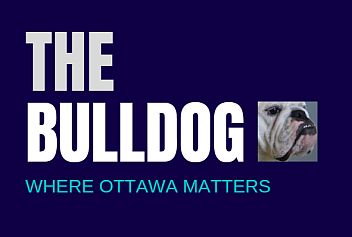Fraud-Waste Hotline Reveals City Employee Misdeeds
These are the highlights of the fraud and waste hotline city audit.
The Bulldog apologizes for the faulty line breaks but the report used by the auditor general’s office does not translate well to this website’s page-making program;
—
2023 Report on the Fraud and Waste Hotline
Violation of Laws, Regulations, Policies, Procedures
Cases included in this category had allegation(s) of behaviour that were found to be in
violation of a law, rule, or policy set by the City, a regulatory authority, or any level of
government. This would include all City of Ottawa policies and procedures.
There was a total of 20 substantiated investigations in this category, which included:
• 14 employee violations of the Ontario Highway Traffic Act (HTA) and the City
policies and procedures;
• an employee who was found to have worked out of province, without authorization,
in violation of the City’s Hybrid Work Procedures;
• an external vendor under contract with the City that was found to have completed
a vehicle safety inspection that did not meet Ontario Ministry of Transportation
standards, the City’s inspection checklist, or the terms of the standing offer; and
• the Investigation of Allegations Related to Planning Activities for the Conservancy
Development. Further details about the report can be found on our website.
Unauthorized Use or Misuse of City Property, Information or Time
Cases included in this category relate to the unauthorized use, misuse, harm, or threat of
harm to City property, equipment, materials, records, or network. This includes the abuse
of work time or fraudulent use of sick leave.
There was a total of 20 substantiated investigations in this category. Investigations within
this category included:
• bus operators leaving buses unattended during their shifts and blocking a lane of
traffic or road visibility;
• employee time theft (e.g., leaving before the end of the shift, unauthorized breaks
or leave);
• misuse of sick leave by employees; and
• unauthorized use or misuse of City equipment, uniforms, or vehicles.
Also included in this category was the Investigation into the Use of City Resources and
Equipment conducted by our Office. The investigation summary is included on page 15
of this report.
Harm to People or Potential Harm to People
Cases included in this category had allegation(s) of physical or mental harm, or potential
harm, to employees or others relating to violence, threat, discrimination, or harassment.
There was a total of 10 substantiated investigations in this category. Please see the
Investigation Related to Long-Term Care on page 14 of this report for additional detail.
Theft, Embezzlement, Fraud
Cases included in this category had allegation(s) of acts of stealing from the City or an
individual, and attempts to conceal it.
There was a total of two substantiated investigations in this category. Investigations within
this category included:
2023 Report on the Fraud and Waste Hotline
11
• an employee who was found to have removed items from a City facility, for
personal use and resale; and,
• the Investigation of the Manotick Business Improvement Area Expenses. Further
details about the report can be found on our website.
Unethical Conduct or Conflict of Interest
Cases included in this category had allegation(s) of unethical or dishonest conduct by a
person, and any situation or action of an employee that puts them in conflict, or could be
perceived as putting them in conflict, with the interests of the organization.
There was one substantiated investigation in this category, which involved an employee
using their City of Ottawa position title to promote their private business.
Summary of Corrective Action
Corrective actions are taken as a result of investigated reports and are the responsibility
of management. Multiple corrective actions may be issued as a result of one report.
Additionally, management may deem it necessary to take corrective actions to address
gaps identified during investigations that were not substantiated (e.g., process
improvements or additional communications). Where management has taken action
following a substantiated investigation, outcomes are provided below (See Table 6).
When corrective actions are deemed necessary, the OAG performs follow-up procedures
with management to verify that the actions have been completed.
To read the full report, click here.
—
—
RECOMMENDED FOR YOU
Police Issue ‘Clarification’ Of Earlier Statements
Stormwater: Time To Green Carpet Your Deck
—
DON’T MISS OUR REGULAR FEATURES
Everything Ottawa Full Local Bulldog Canadian
Opinion Comments Breaking News Auto
Ontario World Get Cheap Gas Big Money
Pop Gossip Your Home Relax … Tech
Bulldog Weather Full Local Sports
TV/Movies Travel
Page 2 Page 3 Page 4 Page 5 Page 6




Virtually all of those items are ones where the employee should not have been in any doubt that they were wrong. These aren’t slip-ups or misunderstandings – they clearly demonstrate malfeasance and need to be dealt with as such.
Since these incidents continue year after year, I wonder if the consequences are significant enough and if employees across the City are aware of both the occurrences and the subsequent discipline that was handed out. Are the disciplinary actions enough to act not only as punishment to the offender but also as a deterrent to others? Obviously, these individuals thought they would get away with it or that the risk was worth whatever gain they got.
I’d like to know what the line is between substantiated and unsubstantiated reports. Is her standard ‘beyond the shadow of a doubt’, ‘on the balance of probabilities’ or ‘a reasonable doubt exists’? At what point are matters referred to the police? For example, an incident of theft should, in my opinion, be automatically referred while a bus driver leaving his bus blocking traffic might not be an automatic referral. How long does she have to report out on her investigation and what happens to the employee in the meantime?